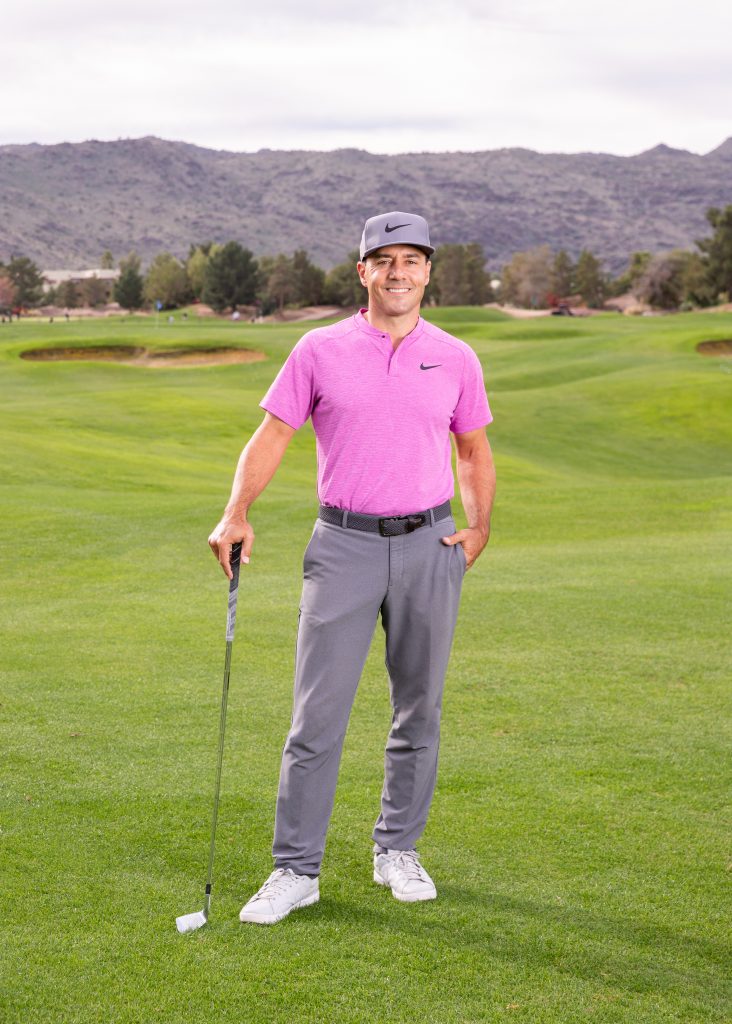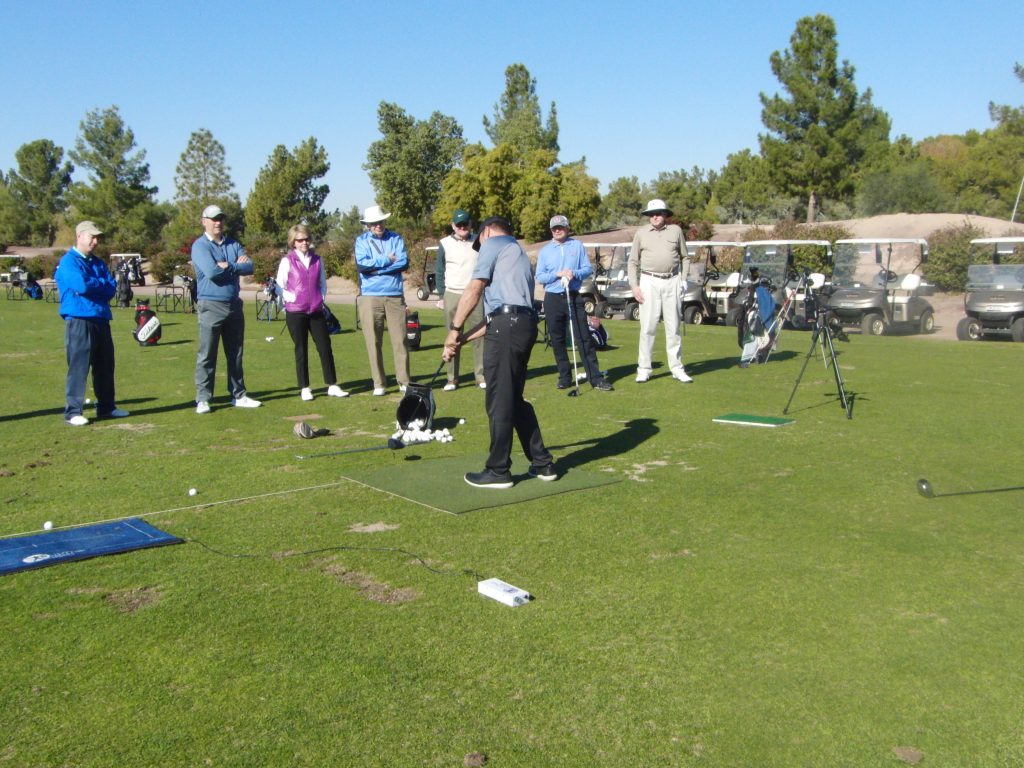Martin Chuck, PGA
Inventor / Coach
Tour Striker Golf Academy
Tour Striker Training Products
Interview with Matt Ward
BACKGROUND:
Golf Digest Top 50 and Golf Magazine Top-100 Coach, Martin Chuck developed his love and talent for the game of golf north of the border in Toronto, Ontario, Canada. Like most kids from Canada, ice hockey was Martin’s first sporting love. It wasn’t long before the allure of golf took hold. Like any true outlier in his given profession, Martin found himself in the shadow of two of the world’s best ball strikers and Canadian Legends, Moe Norman and George Knudson.

THE CHUCK STORY:
I was 10 years old, and my dad had signed me up for a daylong clinic with George Knudson at The National Golf Club of Canada, located not far from where I grew up in Toronto. Nervous as I was, I didn’t hesitate when George asked me to hit a few shots. I cut loose with a mid-iron and hit several shots that had me feeling pretty good. Back then, there was a big oak tree in the landing area on the driving range, and I was “knocking it down.” After watching a few of those, George asked a question that struck me as odd: “I’ll bet your father taught you to keep your head down?”
Well, of course he did, I thought. Haven’t you been watching? At that particular moment in my golfing career, I couldn’t tell you the difference between a fade and a flop shot. But my well-meaning father — my idol, my best friend, my unquestioned guru on practically anything — had explained to me that keeping my head down was the magic elixir for good golf. Hit a bad shot? “You must have moved your head,” Dad would say. “Don’t even worry about where the ball goes, I’ll watch it, you just keep your head down,” was another one of his favorites.
I’ve thought many times about what George — actually it was Mr. Knudson that day — and for many years afterward — had to be thinking at that particular time. Clearly, he wanted to show no disrespect for my dad, who had obviously been a big source of my golf instruction to that point. But he wasn’t afraid to rip off the Band-Aid when it meant setting a motivated youngster on the right track. George hit a few balls for me, demonstrating the basics of how the body moves from address, into backswing, through impact, and to a restful finish. He told me why it’s OK to let the head be transported as part of the natural flow of the swing. There’s no sense of “hit” in a skilled player’s swing, he explained. Rather, the swing flows from the starting form to the finishing form and the ball gets collected along the way.
You wake up in the morning — what’s the driving passion?
The mystery of great golf is a never-ending journey. As a former player and now as a coach, I love trying to solve the puzzle in front of me. The puzzle, or puzzles, being the golfers who seek to improve their games. It’s fun to read into the golfer’s soul and try to map a course that makes sense for their personality and physicality.
The percentage of teachers that really know what they’re talking about when attempting to help golfers play better is roughly what?
100% of the teachers and coaches out there want their students to improve, but my guess would be that 20% have the experience and delivery style to pass along the information in bite-sized portions so the students’ can elevate their understanding of the game.
Given that reality — what kind of roadmap should someone follow in searching for a teacher?
Finding a teacher/coach is tricky. There are “technicians” and “coaches.” The best being a combination of the two. The best coaches aren’t always the folks who make you feel all warm and fuzzy inside. They point out your development path and challenge you to stick to it. To find the instructors who best develop players, look no farther than your internet browser. A random search of the “best in your area,” will lead you to people who have been vetted by enough golfers to show up in search engines. Of course, word of mouth from friends is great, too.
When student and teacher come together for the first time — what should be on the agenda for both sides when beginning the relationship?
It’s up to the student to share his/her goals and it’s up to the teacher to provide a realistic plan of improvement. The teacher must be honest and objective about the student’s current abilities. I use technology to provide objective, irrefutable data as a starting point. Once both parties can agree, good work can commence. The teacher must be honest about the progress, or lack thereof.
How does a student and teacher know when a relationship is working and when it’s not?
If there is trust between the student and coach and you can see measurable, objective gains, the union is working. If the student isn’t improving on measurable benchmarks, it can be the effort of the student or the communication of the coach. It may be time to part ways.
Is there a difference in teaching men and women — and if so, how so?
I teach both sexes the same way; I identify their opportunities and we get to work. I try and read into how much “push” I feel they can take, but it isn’t dependent on whether they are male or female.
What’s the optimum balancing act regarding time involvement for students when dealing with long game issues, short game issues, putting, on-course strategies, etc, etc?
I always try and get to know how my players “play,” the game. On-course coaching is a big part of what I do. Students love “beating ball,” and often neglect the scoring shots around the green and the putting basics that save rounds. To me, practice is a 50/50 long to short game and with high level players, I’ll encourage 40/60 long to short game.
If you could change one thing in golf unilaterally — what would it be and why?
I’d get in a time machine and meet the originator of the interlocking grip. It’s easily the most misused piece of advice handed down by well-meaning golfers to the new enthusiast. By interlocking incorrectly — 9/10 of the interlock grips I see — the golfer is doomed for a mediocre game. The hands are the connection to the club and if it is right during the onset of development, the game can be so much more fun for every golfer.
The major golf organizations — USGA, PGA of America, PGA Tour, R&A, LPGA — are all seeking ways to attract Millennials, women and minorities to the sport. If you were counseling them, what would you advise they be doing — both individually and collectively?
Before becoming a full-time coach, I was a club pro for sixteen years. I always encouraged my club owners to allow juniors access for free at the courses I managed. There are so many modern distractions with phones, digital gaming and devices, that can rob participation in outdoor activities. If golf is available as an inexpensive or free activity, there’s a chance that today’s youth will become the club members and core golfers of tomorrow. It’s actually an investment in the future of the game.
Bet advice you ever received — what was it and who from?
Easily from my wife, Stacey Chuck. I was content as a Director of Golf/GM. I enjoyed being at the Club working all elements of tournaments, teaching, merchandising, etc. She encouraged me to leave the security of guaranteed wage and start my own Golf School. Well, that was eleven years ago and I’ve never looked back. It’s been so rewarding professionally and financially. It’s truly my calling in life and I never feel like I’m actually “working.”

For more info go to:



